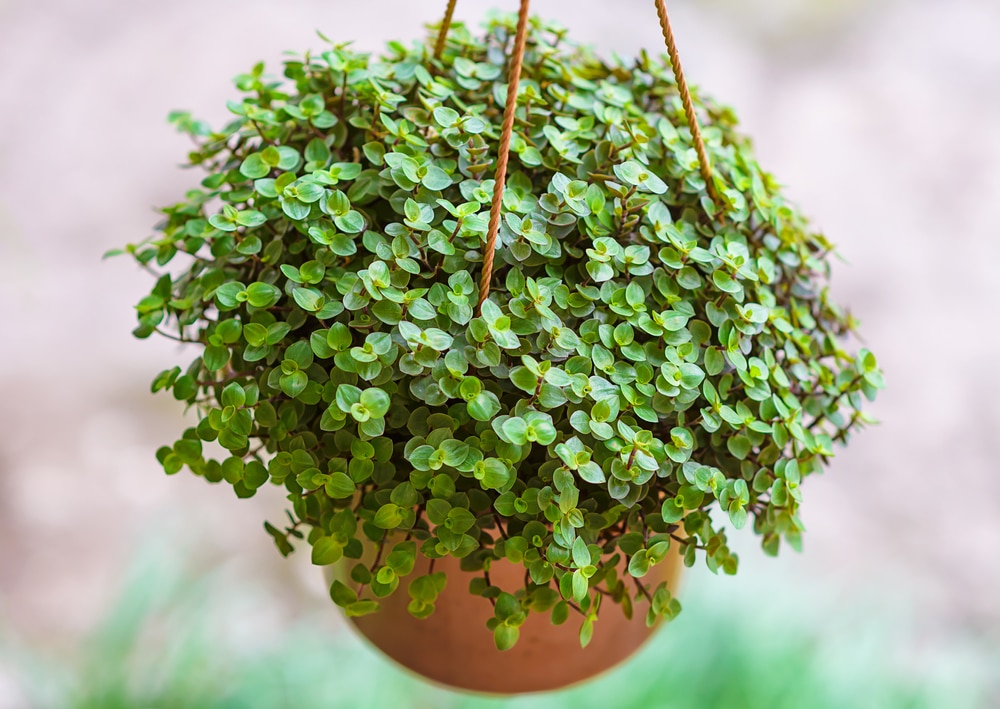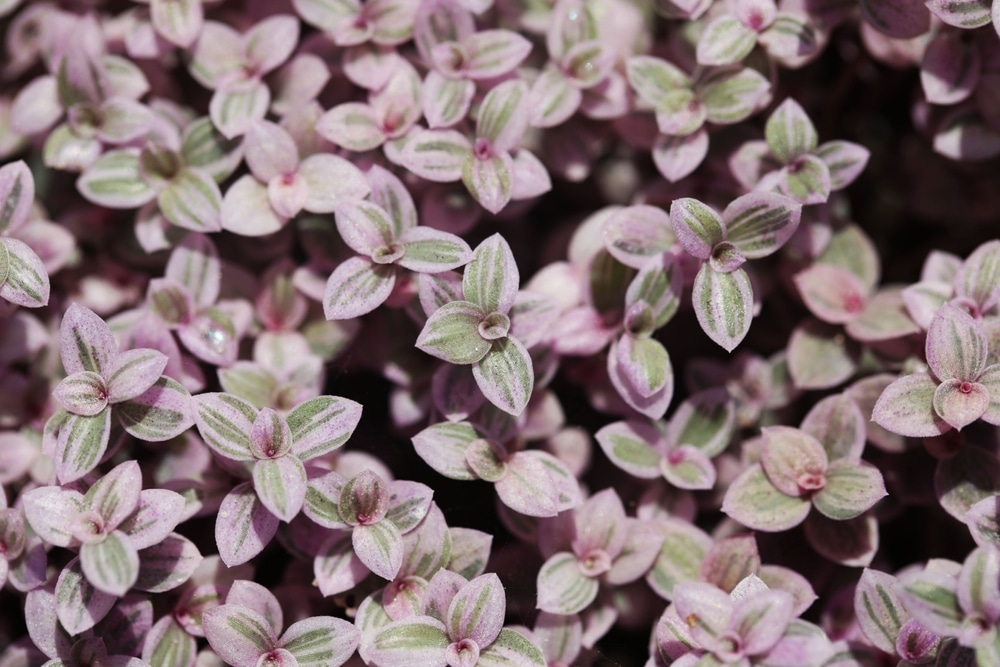The turtle vine is a great option if you’re looking for an easy-to-care-for houseplant. This plant is native to South America countries and commonly found in Mexico and Bolivia. It’s been grown in the United States since the early 1800s and can also be planted outdoors in warmer climates. Here’s everything you need to know about caring for a turtle vine.
| Botanical Name | Callisia repens |
| Common Name | Turtle Vine, inch plant, Bolivian jew |
| Plant Type | Perennial |
| Flower Color | Small, white flowers |
| Size When Mature | 4 Inches tall, spreads to 4 feet |
| Bloom Time | Early Spring |
| Sun Requirements | Full/ Partial Sun |
| USDA Hardiness Zones | 10 to 11 |
| Soil PH Range | 5.0 to 6.0 |
| Soil Type | well-draining |
| Water Needs | Medium |
| Native Area | South and Central America |
What you Need to Know About Turtle Vine (Callisia repens)
The turtle vine is a trailing succulent plant that grows low to the ground. It has thick, fleshy stems and a sprawling growth habit. The plants have purple stems, which will get more purple when grown in a colder climate. They produce tiny white flowers throughout the spring and summer months.
How to care for a turtle vine
Here’s everything you need to know about growing and caring for a thriving turtle vine.
Light
Turtle vine is a relatively sun-tolerant plant, and it can be grown in full sun and partial shade. However, if you plan on growing your turtle vine indoors, it’s best to put it in a bright window with exposure to indirect sunlight for at least 4 to 5 hours per day. You should also rotate the plant regularly to prevent growth in one direction.
Water and soil needs
Turtle vine does best in well-draining, fertile soil that is always kept evenly moist. The plant grows best in soil with a pH range between 5.0 and 6.0.
During the growing season, you should water your plant about once a week and more frequently if your plants are in pots with drainage holes. You should also be careful not to overwater your plant, as this can cause root rot.
Pruning and maintenance
In order to keep your turtle vine looking its best, regular pruning is necessary. For indoor plants, you might consider trimming the stems back every few months to help encourage new growth and maintain a shapely appearance.
Temperature and humidity requirements
Turtle vine is a hardy plant that can tolerate a wide range of temperatures, from warm to cool and humid to dry. It’s best suited for growing in USDA zones 10 to 11, but it can also be grown as a houseplant in other climates with good care. During the winter, the plant must be kept at a temperature above 60°F / 16°C.
Fertilizer
The best fertilizer to use on a turtle plant is a high-quality liquid fertilizer that is low in nitrogen but rich in phosphorus and potassium. This will help ensure healthy and vibrant green foliage without encouraging too much growth.
Common diseases and pests
Turtle vine may be susceptible to certain types of fungal diseases, including gray mold or powdery mildew. You can prevent or manage disease by keeping your plant in a well-ventilated area, reducing watering when the soil is too wet, and removing any diseased leaves or stems as soon as they appear.
Propagation
The easiest way to propagate a turtle vine is through stem cuttings. Simply take a cutting from an existing, healthy plant and place it in a pot with moist soil and good drainage.
Keep the cutting warm, slightly damp, and out of direct sunlight until it begins to grow new roots. You can also propagate your turtle vine by dividing the roots during repotting.
Conclusion
If you’re looking for an easy-to-care-for houseplant, the Turtle Vine (Callisia repens) is a great option. With its sun-tolerant and drought-resistant nature, this versatile plant can be grown indoors or out, and it requires minimal maintenance to keep it looking its best.


